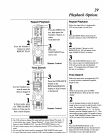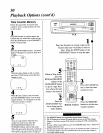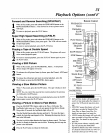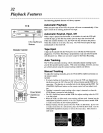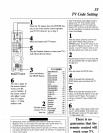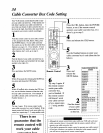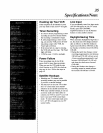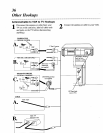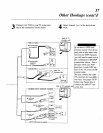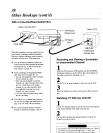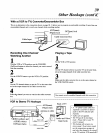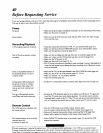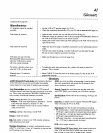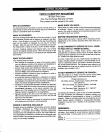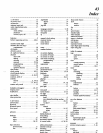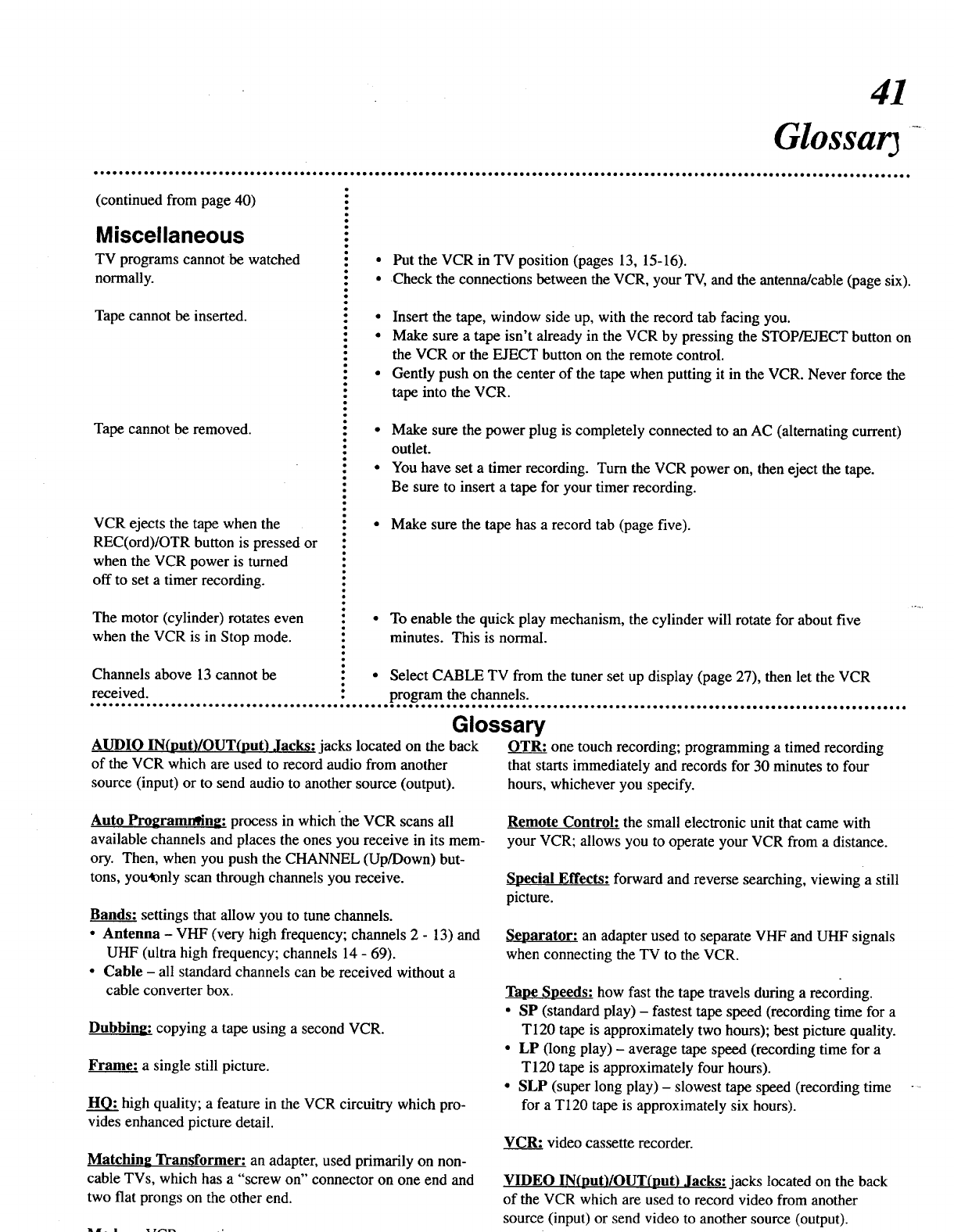
41
Glossar3
(continued from page 40)
Miscellaneous
TV programs cannot be watched
normally.
Tape cannot be inserted.
Tape cannot be removed.
VCR ejects the tape when the
REC(ord)/OTR button is pressed or
when the VCR power is turned
off to set a timer recording.
The motor (cylinder) rotates even
when the VCR is in Stop mode.
Channels above 13 cannot be
o
• Put the VCR in TV position (pages 13, 15-16).
• Check the connections between the VCR, your TV, and the antenna/cable (page six).
• Insert the tape, window side up, with the record tab facing you.
• Make sure a tape isn't already in the VCR by pressing the STOP/EJECT button on
the VCR or the EJECT button on the remote control.
• Gently push on the center of the tape when putting it in the VCR. Never force the
tape into the VCR.
• Make sure the power plug is completely connected to an AC (alternating current)
outlet.
• You have set a timer recording. Turn the VCR power on, then eject the tape.
Be sure to insert a tape for your timer recording.
Make sure the tape has a record tab (page five).
To enable the quick play mechanism, the cylinder will rotate for about five
minutes. This is normal.
Select CABLE TV from the tuner set up display (page 27), then let the VCR
received. : program the channels.
Glossary
AUDIO IN(put)/OUT(put) Jacks: jacks located on the back OTR: one touch recording; programming a timed recording
of the VCR which are used to record audio from another that starts immediately and records for 30 minutes to four
source (input) or to send audio to another source (output). hours, whichever you specify.
Auto Programr_ltng: process in whichthe VCR scans all
available channels and places the ones you receive in its mem-
ory. Then, when you push the CHANNEL (Up/Down) but-
tons, you4only scan through channels you receive.
Bands: settings that allow you to tune channels.
• Antenna - VHF (very high frequency; channels 2 - 13) and
UHF (ultra high frequency; channels 14 - 69).
• Cable - all standard channels can be received without a
cable converter box.
Dubbing: copying a tape using a second VCR.
Frame: a single still picture.
I-IO: high quality; a feature in the VCR circuitry which pro-
vides enhanced picture detail.
Matching Transformer: an adapter, used primarily on non-
cable TVs, which has a "screw on" connector on one end and
two flat prongs on the other end.
Remote Control: the small electronic unit that came with
your VCR; allows you to operate your VCR from a distance.
Special Effects: forward and reverse searching, viewing a still
picture.
Separator: an adapter used to separate VHF and UHF signals
when connecting the TV to the VCR.
Tape Speeds: how fast the tape travels during a recording.
• SP (standard play) - fastest tape speed (recording time for a
T120 tape is approximately two hours); best picture quality.
• LP (long play) - average tape speed (recording time for a
T120 tape is approximately four hours).
• SLP (super long play) - slowest tape speed (recording time
for a T120 tape is approximately six hours).
VCR: video cassette recorder.
VIDEO IN(put)/OUT(put) Jacks: jacks located on the back
of the VCR which are used to record video from another
source (input) or send video to another source (output).



